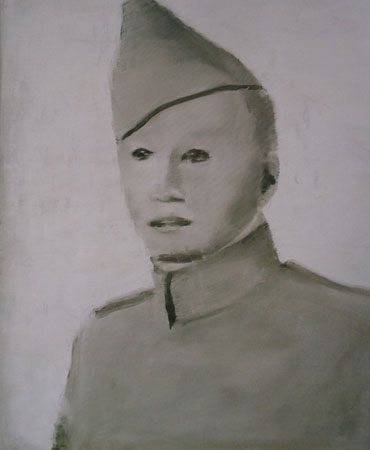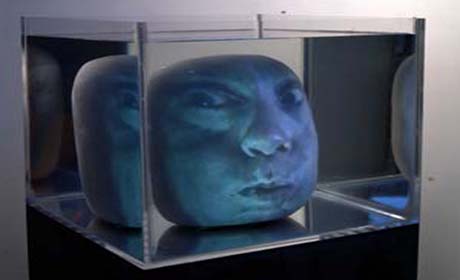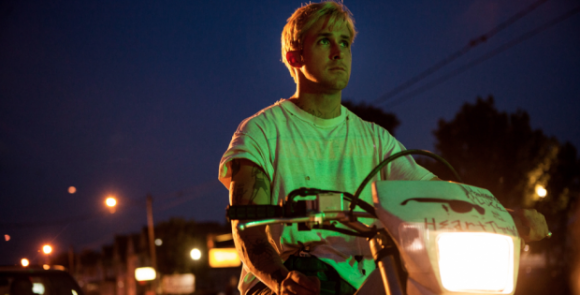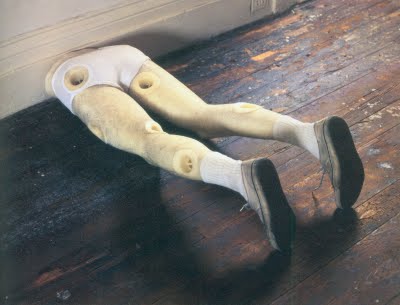
This is now the week of the Boston Marathon bombings.
So all discussion takes places from within the shadow media has created.

This is the shadow of american exceptionalism. U.S. lives are worth more. This topic is now so boring, so utterly idiotic that I don’t think I can have it here. What is more interesting are the pronouncements of a new reactionary “left” that seems to be growing. For this is also still a week in which the dead Thatcher meme collides with domestic terror in the U.S.
The recent covers of the New Economist:

The real levels of domestic oppression continue to get ratcheted up. Over at Dissident Voice, Ajuma Baraka writes of a new report on state violence against the black community in the U.S. He quotes Kali Akuno, National Coordinator of the Malcolm X Grassroots Movement (MXGM):
“What Operation Ghetto Storm reveals is that the practice of executing Black people without pretense of a trial, jury, or judge is an integral part of the government’s current overall strategy of containing the Black community in a state of perpetual colonial subjugation and exploitation.”
The morning after the Boston bombings, Doug Henwood was writing about conspiracy theorists. He was preemptively bullying (trying to) those who would immediately voice concerns or ask questions or suspect false flag operations — by one of SEVENTEEN national security agencies in the United States.
The same morning I saw Zizek’s valentine to the memory of Thatcher, in which he again manages to espouse basic fascist principles and urge his fan base further along the road of white totalitarian values.
Barry Grey at WSWS wrote this in his coverage of media hysteria…
“It remains unknown whether the terrible crime was the work of one person or an organization, homegrown or foreign, although even some congressmen have acknowledged that several factors point to a rightwing domestic terrorist. These include the relatively crude character of the bombs, the lack of any prior threat alert or claim of responsibility, and the timing—on Boston’s Patriot’s Day and federal tax day and the same week as the 1995 bombing of the federal building in Oklahoma City.”
and
“But while the nation, including the people of Boston, deeply saddened and shocked by the event as they are, have remained calm, the media and their leading personnel present a picture of disorientation and panic. There is an element of calculation in this, as the media establishment attempts to sow fear and confusion to justify past police state measures at home and wars abroad carried out in the name of the “war on terror,” and prepare the way for a further militarization of American society. But there is as well a genuine mood of hysteria within this affluent and self-contained social layer.”
I want to discuss aesthetics, and talk of several films and fimmakers. Any discussion however, cannot be separated from the material world around us. When I see the coverage of Chavez death in the media, then the mainstream coverage, as well as much of the left (sic)coverage of Thatcher’s death, I feel compelled to address my own responses to culture in light of this. I think there is tendency, and I often suffer from it as well, of being a fan. It is hard however, to tweeze apart the authentic appreciation and engagement with artworks, with culture, from the distortions of Capitalist media and marketing. In other words, it is just as destructive to dismiss the entirety of culture because of Capital’s corporate hegemony as it is to fall prey to pre-guided responses to bourgeois product.

The Place Beyond the Pines is the new film by Derek Cianfrance (whose previous film was Blue Valentine). It is a seductive film in many ways, and the film school professor in me is acutely aware of the level of expertise shown in much of how the film was shot and edited. There is a good deal, in fact, to appreciate about this film. For one thing, the narrative works, by virtue of unconventional structure (and it is genuinely distancing in that sense) as it relates to ideas of protagonists. The problem however, is that the film frames this story, accumulatively at least, in a terrible set of bourgeois perspectives. It is becoming increasingly clear to me that very few films DONT do this. But this is, after all, a studio product.

Without doing a recap of the story, there are a couple factors worth looking at. Ryan Gosling, as a carny motorcycle stunt rider, a drifter, a loner, is the heart of the film — and its a problem because while Gosling is a fascinating actor he is also still a former Mousketeer. He works to mitigate his beauty, but never steps outside a deeply narcissistic presentation of that beauty. The fetishizing of his tattoos, and an entire symphony of “lumpen” effects, becomes almost its own mini-movie. Gosling’s feminine voice, his genuine intensity of focus, is still forced to compete with a very troubling middle class persona. That does not change his being the heart of this failed tragedy. For once Luke Glanton (his character) dies, everything that follows is coda. Satan was the heart of Paradise Lost, and Ahab the heart of Moby Dick. It is useful to compare this, on one level anyway, with No Country for Old Men — the book, not the abortive film version. The structures are not dissimilar and I wonder if Cianfrance was conscious of this. McCarthy knew once Chigurh left, he was working with codas. He had two of them, in fact. Llewelyn Moss and the Sheriff. Moss dies, too, in an effective counter to convention. Bell is left alone for the final third of the book, to ruminate on violence and the forces that ensnare us in it.
In the Cianfrance film, there is the attempt at grandeur, and the film begins to collapse beneath the weight of pretension (much as Malick’s film do). For such grandeur requires an expansive vision that destroys the conventions of the master narrative. Here I become very aware of how film or artworks cannot step outside of history. Tolstoy, Dostoyevsky, and Melville demolished expectations, and augured pyschic cataclysms that were the more profound for their sense of immediacy. The accepted idea of “the real” (which I have written about and which seems more and more crucial) is assaulted, the author never forgets the mission to interrogate all assumptions. Cianfrance possesses no such mountain from which he can look down upon his own voice. Consequently, the long shots of sunsets over Schenectady become simply self conscious “prestige effects”. Much as Cianfrance wants the landscape of upstate New York, and its various failed economies and lost dreams to resonate, they cannot. Ben Mendelsohn as Gosling’s crime partner, however, comes much closer to capturing something of the pain of the marginalized, and it is Mendolsohn’s auto repair shed and trailer that stay with us most. If one simply excised those scenes into a fifteen minute film, one might have something deeply compelling, for it is that sense of human detritus, of the singular loneliness of our society that is what the film was meant to be about. All the mock Biblical sins of the father visited upon sons tropes are simply kitsch filler.

Paul Graham, photography, 1984 Liverpool
This particular failure (and ‘Pines if far more worth seeing than 95% of other studio work) is the same failure one sees in Malick, and in another way in Michael Haneke. The Austrian filmmaker is the darling of cinefiles at the moment, and one is going to be derided for questioning his work — but a closer reading of any of his films reveals the same specific frame, the moralizing bourgeois intelligence that parades its pseudo radicalism, while steadfastly operating within a middle-brow world view.
This becomes a complex analysis because Haneke’s formalism, his austere sense of space, and the clarity with which he observes his subjects. Bunuel once said he didn’t want to please the audience. Reading reviews of Haneke’s films, one hears oh, they are depressing, etc. But these same people LOVE the films, and Amor won last year’s oscar for best foreign film. A friend said to me that Haneke was deconstructing the bourgeoisie; and I find that actually he is positing the bourgeois world as nature, and in fact the affluence of most of his settings suggests this is HIS world. A film such as Amor also suffers from the banality of Haneke’s idea of realism. This is a virus running through a good deal of indi filmmaking. Close observation substituting for deep observation.
In an interview at BOMB magazine, Haneke said:
MH I want to go back to your question about reality. And the fact that to Erika, the reality of what she sees in the sex shop is more real than the feeling of reality in her “normal” life. I believe that is our general situation. We take reality in the media for reality, which naturally is not reality but only images of a reality. When we take the news that comes on TV as reality, it creates a state of derealization. It has nothing to do with reality. It’s completely manipulated and it’s false. We’re actually deprived of reality. That’s the theme of all my movies, and that’s the danger.

The problem here is, I suspect, that Haneke’s intelligence doesn’t extend beyond exactly this. Reality is not the closely observed as the counterpoint to the world of hyperrealism. My friend Guy Zimmerman wrote me this week, and said (of a theatre piece he had just seen), that the problem was that the play did not question assumptions about our fixed identity.

This is in a sense the last bastion to what is digestible for today’s audiences. Acceptance means fixing identity. One can be as depressing as one wants, just do not question who we are, or that we know who we are. One of the things that made The Master a rather monumental film, was that that the heart of that film was this very idea — we can never grasp ourselves, and if we are honestly facing the experience of dissasociation we will be marginalized, we will be stigmatized and cast out. Slavery or madness. Haneke is appealing, however, because of an intelligence in composition, and in technique. But this should not be mistaken for more.
I am reminded of sculpter Robert Gober, whose work often addresses the insistence of western culture on normalcy. On a pathological need to embrace repression, cleanliness and a sanitized psyche and body. At bottom, Haneke stops his questioning. There is a tacit acceptance.
Adorno speaking of the canon of the beautiful (as a canon of prohibitions) said:
“This canon no longer forbids universal rules, but it debars violation of the work’s immanent consistency.”

There is something of bourgeois indignation in Haneke. It is the trace elements of the system of domination. That suffering is ugly, but then incorporate that ugliness into the artwork and thereby neutralize it. Either neutralize or internalize it and project it outward as condemnation. The moralizing narrative always betrays the suffering of those held captive by the forces of domination, in one way or another. The manufacturing of prestige artworks is conscious to the degree that arbiters of taste will embrace a Haneke because the depiction of suffering is contained, and the troubles of the characters remain resolved in their unresolvability.
“The more torture went on in the basements, the more insistently they made sure the roof rested on columns.”
Adorno
The violence of corporate media, its constant recreation of a false reality, of false consciousness, has numbed a populace that retreats into either rank cynicism, or new age pseudo mysticism — or, the banality of branding. The cruelty of Obama’s presidency, acting out the final stage of Capitalist destruction is fiercely insistent on the hiding of itself. Such hiding becomes infectious.
Profit is embedded in all corporate product. Still, there are sometimes elements of an irrationality that disunify the reified product, and suggest something of the spirit of what art was intended to do, and this can too easily be dismissed by snarks and cynics. Adorno said purposlessness without purpose is irony. I would suggest that only in the surplus creativity of artists whose work defies profit, but who reject accommodation to the various sub-categories of bourgeois elitism, can anything of liberation remain. There is no escape, though. None. The posture that suggests purity, or the critic demanding of it, is only a form of resignation. The best of genre narrative is now more radicalizing than a good deal of work by artists like Haneke. And the tainted narcissism of filmmakers like Cianfrance, is always going to attract a certain adulation because its canvas never leaves the stronghold of that sensibility of accommodation to the master narrative. Still, a good 15 minutes is better than no good minutes.
In a week in which one can expect more competitive grief, ever intensifying outrage, and the failure of the this new reactionary left to question the story — however it ends up being abridged for popular consumption, it is useful to remember that barbarism is literal, and the new paranoia of the 21st century *cruise missile left*, the Zizekians, Henwoodians, the Marc Cooper legates to this new future, all the various state department ghouls who now infiltrate NGOs, and arts organizations, are there as forces of distrust with culture, with humanity, and de-facto demand the legality of a new *real politik* — which is only another form of the strict hierarchies of power.


Unfortunately I haven’t seen the films you reference – there is so much I would want to say, about Hanneke for example. But yeah, it’s another milestone, like the aggressive naiveté about Georgia and then “Arab Spring”, that helps us see how frauds and cuckoos have come to the fore as left intellectuals. Zizek and Henwood seem to have more influence, because they are geared for dissemination across these new media platforms, than real left intellectuals even the previous crop of relatively established authorities (Chomsky, Zinn, Amiri Baraka, Naomi Klein). The stupidity of the discourse is really striking – one thinks one has reached the nadir and there’s another plunge waiting. Now there is this sense that if you fail to respect Thatcher, this grotesque, incoherent, bigoted, mass murdering near satirical creation of pr clique, yhe first to attack you will be these “left intellectuals” whose prominence is as ersatz as hers, as much a creation of insittutional capital, with as little to do with actual popular support, as hers. Zizek, Henwood, Corey Robin produced by the same system and spectacle as produced Thatcher, their job is to give a left flavour to the ridiculous view that she was some petty bourgeois dissident radical impressive woman of principle and model leader. SO far from needing a Thatcher of our own, “the left” is at present labouring under the pressure of nothing but thatchers, these piles of thatchers that capital in media and academia, in culture industry, have heaped on us.
@molly;
yeah, see, i think this new sort of marketed left….zizek and the rest….and this includes these awful people like suzanne nossel…..who was at amnesty and then PEN….and Hedges had a nice piece on her……a Hillary clinton war groupie……but is referred to as leftist. Not liberal even but leftist. But what you say is very true…..the first attacks come from the left who are as quick to bury Chavez and praise thatcher as are the Murdoch scribs. I find Haneke a similar phenomenon………i just cant quite believe so many people accept what is so obviously a creation of the bourgeois intelligensia — and on one level I get why Amor was so affecting for many, I do. But as Ive said, I can cry at pepsi commercials too…….and it really raises interesting questions about how we react to artworks. What is the nature of our investment in them, and how we analyse the codes — our dissembling of this to ourselves, etc.There is a lot more to say about all of this.
So I actually adored this Hanneke production of Don Giovanni at the Bastille. It was cinematic, yes, but not at the expense of the theatrical, and it was smart politically. But the other films of his I’ve seen – The White Ribbon, Code Inconnu, Funny Games – have left me with this uneasy impression of being addressed by a deeply reactionary consciousness trying to exploit the mythology embedded in it for the usual narrative cinematic efgfects the audience expects while at the same ,time disavowing it via s soft critique and the indfulgence of the enjoyment of it. Bell hooks talking about the film Smoke said something I would suggest is really relevant to Hanneke’s “critiques” of white bourhgeois europeanness…he really is mainly entertaining us with this sociological pleasyure. he has created an easy universe with types from the reactionary mythology that gratifies an audience’s will to domoinate through this simple formulae. In a way it is very similar to Harry Potter or Twilight – the extent of the divergence from reactionary cartoonish ethnograhy is only the favour of the audience – the way the audience is directed to feel affection here and idslike there. This empowering of the audience to create the hierarchies, ad hominem, is a step further in this encouragement of bourgeois white solipsism than the sentimentality of Dickens or Dumas. Code Inconnu especially is like a treatise in the pseudo multiculturalism that sets itself up as the verification of these odious critiques like Henwoods and Zizek’s of the liberal culture tourist or whatever.
Oh yeah and Linda Melvern and that horrible Samantha Power (???) the “genocide chick”
See, I think what you say about Dumas, or, well maybe not Dickens because Dickens is sort of more complex, but I could argue this is why I say certain genre pieces are far more expressive of something that resists these hierarchies, perhaps because they negate the stereotypes in a sense. And these might have to do with form, with the nature of conventions….. In any event, what you say I feel is right because the popularity of Haneke must be attributed to something. He reminds me of a lot of these other sort of ‘high’ culture priest/scavangers –peter sellers, and whoever it is these days, and again, the issue really is that ideologically, this work is reactionary. It is reactionary because the status quo is never questioned. Its deeper than that of course, but in one way Haneke is no different than Tarantino, its only the level of education in the targeted audience. There is a valorizing of these bourgeois institutions, by way of these dilettantish critiques — which are sort of comforting because while *depressing* they somehow reinforce the values of the status quo. I always think of Pasolini in these discussions, where the DNA of each shot , of every scene is like an Xray of the establishment. His anti fascism is so acute, and in Haneke there is all this taste (and he has terrific taste up to a point) is in service of really retrograde ideology. I think this is really what the those Cashier critics means by mise en scene….the indellible but ineffable qualities of the collective vision in each image. Or Antonioni where the camera is asking questions, and not simply recording decoration./// And yes Power and Melvern….ugh. Hideous .The NYRB these days, too….ghastly.
My last comment here has vanished – what I said was I don’t equate Tarantino, who is actiively reactionary, to Hanneke, who is more like a failed critic, a particulartly Austrian type of solipsist who puts in play these discrete types and tried then to toy which the very reactionary evaluations and hierarchies among them. He tried to be a critic but he concedes everything important from the start. But for me this isn’t unwatchablme shit – I was very much entertained by Code Inconnu and the White Ribbon, both its “realism” and its generic features working on me perfectly. I get frustrated by this unresolved, oblique techique he uses – in White Ribbon there seemed to me to be hints that the narrator is hiding his own criminality or something, but its just this faint suggestion and never elaborated. The artificial unknowable is staged very overtly as a repression – the film’s own repression, at which we must forever guess. In Code Inconnu though the exploration of whiteness – A french national whiteness, out of Barrès – requires the service of foils whose design is primary to provide this friction and contrast. The association of tghe French whiteness with cinema seems a gesture of critique but it really confirms that Hegelian white supremacism – this whiteness transcends the bodily and materials etc. The worst aspects of Hanneke he shares it seems more with Lynch than Tarantino. But the stuff is not as vicious and base and idiotic as theirs. It is not stupidifying at least.
See, I would argue Tarantino is a critic….in his mind. He is sampling from his perch at the video store he worked at, and Haneke is doing so from his chair at the university. But i was speaking of this backdrop that endorses the narrative of the state. And more, of class. Tarantino, and most hollywood directors do this, its their reflex. Lynch is an effete art school reactionary (he owns several very big business schools in france I believe….i think france…but anyway, he is very rich) who does sort of what a lot of post modern artists do in a sense. Lynch is like cindy sherman, they revise the revision…..their references are always other movies or parts of pop culture. He is also profoundly middle brow, with his transcendal meditation tours and shit. ——Now…haneke is more educated….Haneke is catering to this set of style codes (slow, hyper naturalistic acting, and close observation (in that sense Cache is his most honest film, because its inherently dishonest) but I think no less reactionary. Tarantino, because he has so few actual ideas, resorts to this sadism that is, of course, part of his popularity. Death Proof is the best example. Haneke isnt a misogynist the way tarantino is, either. But if you c ompare Burno Dumont to Haneke, I think you see pretty radical differences. For Dumont the mystery isnt unknowable in the way a Haneke lays it out…its sort of more a malaise, a melancholia of the spirit — and in a sense this notion of guilt in western christian countries is a topic with dumont I think. Haneke is sort of a pedant. With taste. Tarantino has no taste…..not even bad taste. He THINKS he does, but he doesnt., sadly. But what they share is this limit, this self created boundary beyond which they never go, vis a vis the nature of the state, and the world hierarchies. Haneke questions whiteness maybe, the way Lynch does the middle class in blue velvet…but it stops right there. The default is adjustment or non adjustment. A Dumont will suggest there is no adjustment, because there might not be anything to really adjust to, and hence that is the basic lie…..and this goes back to the fixed identity question again.
The first Haneke I saw was “Funny Games’ and doesn’t show the problems of the later explorations of “multicultural” Europe; it was really just a little allegory of Nazism as a slasher, the observation that made it so interesting was the shame that prevents the family from telling the boat that comes by what is happening in their house. This is that striking kind of observation he offers so compellingly then that only later does one begin to sense the deep dishonesty or error of.
I think Lynch is much more repulsive filmaker, his stuff is so feverish in its efforts to render humanity vile and create heirarchies irrationallly and to demonize ppl and instill loathing and fear. Hanneke at least stages whiteness as the danger to everybody, the pernicious agent in human affairs; Lynch is still in absolute extreme white supremacist american aryanist posture, everything is a danger to wholesome white America, and he shows this recycling all the standard extreme reactionary tropes, worries about miscegenation, mingling and decadence, infection, hybridity, permeated membranes etc